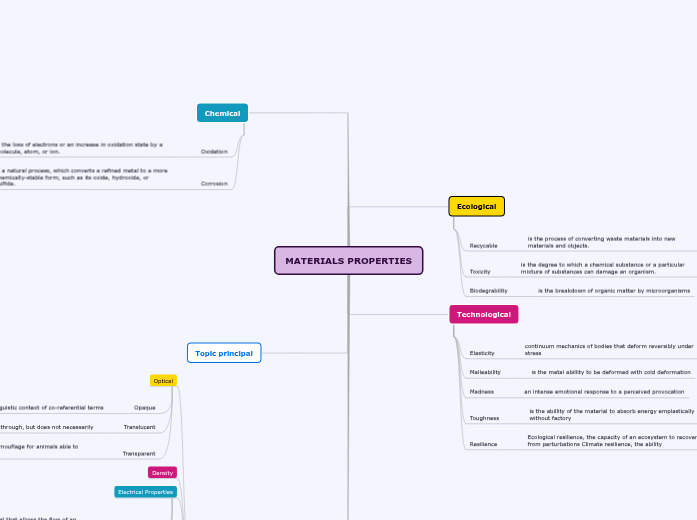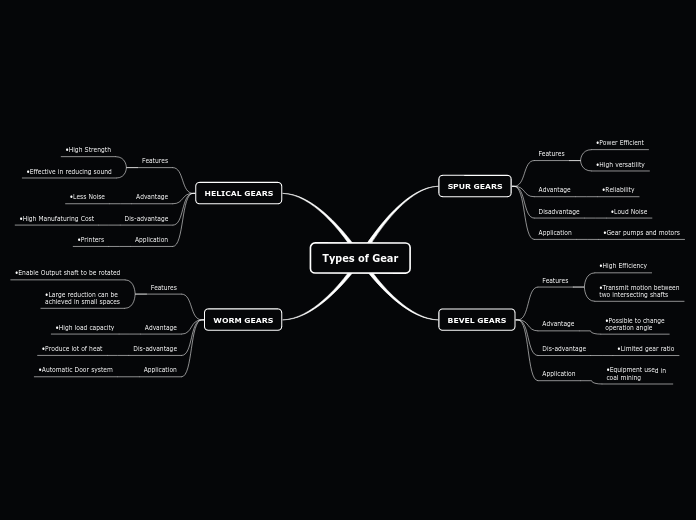MATERIALS PROPERTIES
Physical
Mechanical
flexion
describe movements that affect the angle between two parts of the body.
compresion
compression is the application of balanced inward
tension
may be described as the pulling force transmitted axially by the means of a string, cable, chain, or similar one-dimensional continuous object
torsion
is the twisting of an object due to an applied torque
Strengh
is the measure of an animal's exertion of force on physical objects
Thermal Properties
fusibility
of a material is the ease at which the material can be fused together or to the temperature or amount of heat required to melt a material
expansion
is the tendency of matter to change its shape, area, and volume in response to a change in temperature
Conductivity
is the reciprocal of electrical resistivity, and measures a material's ability to conduct an electric current
Electrical Properties
Semiconductor
material has an electrical conductivity value falling between that of a metal, like copper, gold, etc. and an insulator, such as glass
Insulator
insulators contain small numbers of mobile charges (charge carriers) which can carry current
Conductors
is an object or type of material that allows the flow of an electrical current in one or more directions
Density
Optical
Transparent
can provide almost perfect camouflage for animals able to achieve it.
Translucent
it allows light to pass through, but does not necessarily
Opaque
a term to describe the linguistic context of co-referential terms
Topic principal
Chemical
Corrosion
is a natural process, which converts a refined metal to a more chemically-stable form, such as its oxide, hydroxide, or sulfide.
Oxidation
is the loss of electrons or an increase in oxidation state by a molecule, atom, or ion.
Technological
Resilience
Ecological resilience, the capacity of an ecosystem to recover from perturbations Climate resilience, the ability
Toughness
is the abillity of the material to absorb energy emplastically without factory
Madness
an intense emotional response to a perceived provocation
Malleability
is the metal abillity to be deformed with cold deformation
Elasticity
continuum mechanics of bodies that deform reversibly under stress
Ecological
Biodegrability
is the breakdown of organic matter by microorganisms
Toxicity
is the degree to which a chemical substance or a particular mixture of substances can damage an organism.
Recycable
is the process of converting waste materials into new materials and objects.









